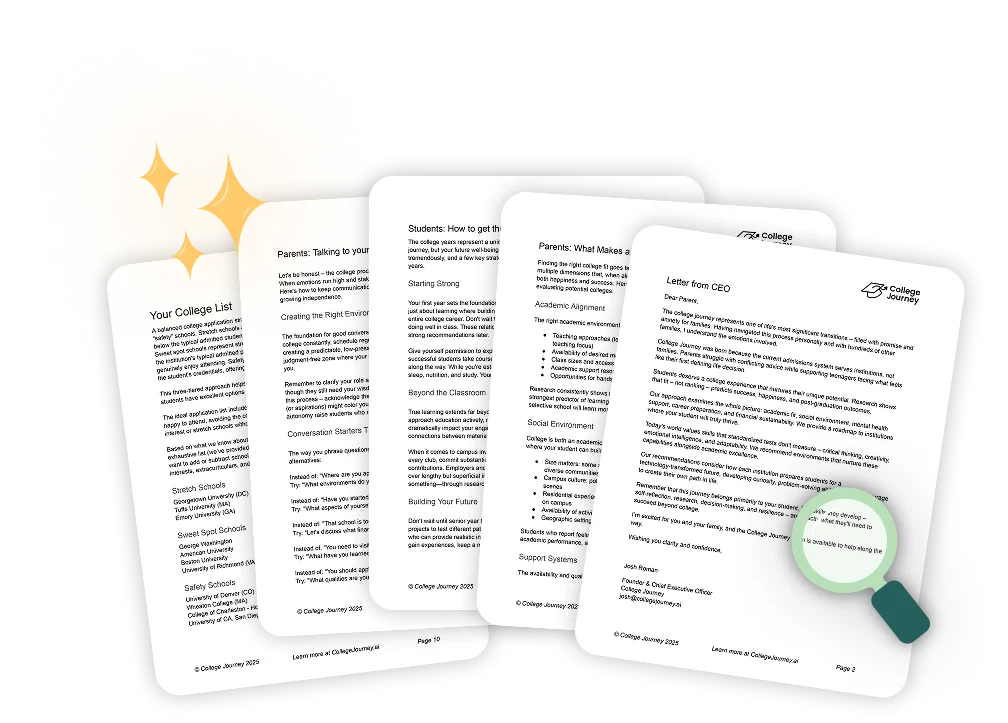Transferring colleges with a low GPA can feel overwhelming, but it’s absolutely possible. Many colleges look beyond just grades. They consider your personal growth, activities outside of class, and the story behind your journey.
With the right approach, you can find a school that’s a better match and unlock new opportunities. In this article, we’ll show you how to navigate the transfer process, even with a low GPA. You’ll learn how to find schools that see more than numbers and how to build a strong application.
Prefer to listen? Try our short audio overview:
Key Takeaways
- Be honest about your GPA and highlight your growth and improvements.
- Recent academic progress can show commitment and readiness for success.
- A strong personal statement and recommendation letters are crucial.
- Research transfer-friendly colleges with flexible GPA requirements.
- Apply to multiple colleges to increase your chances of acceptance.
What You Should Know About Transferring Colleges
Transferring colleges can be an essential step in your education. Here’s what you need to know to make the process smoother:
Understand Transfer Policies
Every college has different rules for transfer students. Some have a minimum GPA requirement, while others take a more holistic approach. Schools that value more than just grades may look at your extracurriculars, personal growth, or work experience. About 37% of students transfer at least once during their college career, so you’re not alone in making this move.
Check Credit Transfers
Not all your current credits may transfer. This can depend on the courses you’ve taken and the policies of the new school. Reach out to advisors early to see which credits will count. Some colleges have online tools to help you check transfer equivalencies. Doing this research can save time and help you avoid surprises.
Prepare Your Application
Transferring usually requires more than just sending transcripts. Many schools ask for personal statements, letters of recommendation, and test scores. A strong personal statement can explain gaps in your academic record and show why you’re ready to succeed. Use this as an opportunity to stand out.
Mind Deadlines
Transfer application deadlines can vary by school. Some schools have rolling admissions, while others stick to strict timelines. Missing a deadline could delay your plans, so double-check the requirements and give yourself ample time to gather materials.
Can I Transfer to Another College with Bad Grades?
You can transfer to another college even if your GPA is low. It might take extra effort and careful planning, but many students in your position have done it successfully. Here’s how you can approach the process:
Find Colleges That Fit Your Situation
Some colleges are more flexible with GPA requirements. Community colleges, state universities, and schools with open admissions policies are good options. Look for colleges that evaluate more than just grades. Schools that take a holistic approach might also value your experiences, extracurriculars, or personal growth.
You can also take help from your friends and family while choosing your colleges. In case they need to brush up on the information, here’s a quick guide to the college admission process for parents.
Strengthen Your Application
A low GPA doesn’t have to hold you back if you build a strong application. Use your personal statement to explain your challenges and how you’ve worked to overcome them. Be honest, but focus on what you’ve learned and how you’ve grown. Highlight recent academic successes, improvements, or achievements outside of school.
Explore Transfer Pathway Programs
Many colleges offer transfer pathway programs. These programs guarantee admission if you meet certain requirements, like completing specific courses or reaching a target GPA. These pathways are often partnerships between community colleges and four-year schools, making achieving your goals easier.
Show Your Effort and Growth
Colleges appreciate students who show determination and improvement. If you’ve taken steps to improve, such as retaking classes, attending tutoring, or working on time management, include that in your application. Admissions officers want to see your commitment to growth and willingness to work hard.
Understanding GPA’s Role in the Transfer Process
Overwhelmed by college research?
Let us help save time and find the perfect schools for your family.
Your GPA is an essential factor in the college transfer process. Admissions offices often use it to assess your academic readiness. In fact, most public four-year colleges, like St. John Fisher University, require a minimum GPA for transfer students. Your grades will likely play a key role in your application.
That said, GPA isn’t the only thing that matters. Many schools use a holistic review process. They also look at personal statements, recommendation letters, and extracurricular activities. These elements help admissions teams see your full potential beyond just numbers.
It’s also worth noting that transfer admission rates can vary widely. At some selective schools, transfer acceptance rates are below 5%. For less competitive schools, these rates can be much higher
Improving Your GPA Before You Transfer
With some effort, you can improve your GPA and strengthen your application. Even small improvements can make a big difference.
How Small GPA Improvements Can Lead to Big Changes
Raising your GPA might seem challenging, but even a slight increase can greatly impact you. For example, boosting your GPA by 0.3 or 0.5 might meet the minimum GPA requirements for more schools.
Admissions teams also pay attention to trends in your performance. If your recent grades are better than earlier ones, it shows growth and commitment. Transfer students with upward grade trends often have stronger chances of acceptance.
Time Management Tips to Help Improve Your GPA
Managing your time well can make it easier to improve your grades. Start by creating a schedule that prioritizes your hardest classes. Break your assignments into smaller tasks and tackle them consistently.
You should also avoid cramming at the last minute. Use planners or study apps to stay organized and on top of deadlines. Don’t forget to schedule breaks and rest.
Can Taking Extra Classes Help You Raise Your GPA?
Extra classes can help boost your GPA, especially if you focus on the right strategies. Here’s how to approach it:
- Retake low-grade courses: Many colleges allow grade replacement policies. This means the new grade can replace the old one in your GPA calculation, giving you a faster way to improve.
- Choose courses that play to your strengths: Enroll in subjects you excel in or are passionate about. High grades in these classes can help balance out lower grades from tougher courses.
- Focus on core or transferable credits: Prioritize classes that will transfer to your target school. This ensures your efforts directly impact your future academic plan.
- Consider online or summer classes: These options can let you take extra courses without overloading your regular semester schedule.
How to Build a Strong Transfer Application
Building a strong transfer application is your chance to show why you’re ready for this next step. Admissions teams want to see motivated students with clear goals and a compelling story.
Writing a Personal Statement That Highlights Your Strengths
Your personal statement is the most important part of your transfer application. Use it to explain why you’re transferring and how the new school fits your goals. Focus on your strengths and achievements, and show how you’ve grown.
For example, if the school offers research opportunities in your major, explain why that excites you. Admissions officers value honesty and enthusiasm, so let your voice come through.
Why Good Letters of Recommendation Matter
Strong recommendation letters can add depth to your application, even if you wave your right to view them. Choose people who know you well and can talk about your academic skills, work ethic, and character. This could be a professor, an advisor, or an employer. Ask them early, so they have time to write.
Letters with specific examples, like how you improved in a class or took on extra responsibility, carry more weight. Personalized recommendations can be especially important for transfer students with gaps or challenges in their academic record.
How to Show Growth and Improvement in Your Application
Colleges love to see students who’ve worked hard to improve. If your grades have gotten better over time, highlight that. Use your personal statement to explain how you tackled challenges, built better habits, or sought extra support. For example, if you struggled in your first year but have improved your GPA steadily, make that clear.
Talking to College Admissions with a Low GPA Requirement
Many colleges will look past a low GPA if you can show growth and determination. The key is to be honest, stay positive, and focus on your progress. Here’s how to approach these conversations.
How to Be Honest About Your GPA and Still Present Yourself Positively
Be honest about your GPA, but don’t let it define you. Acknowledge any challenges you faced without blaming others or making excuses. For instance, if your GPA dropped because of personal struggles or a tough adjustment to college, explain briefly. Then, shift the focus to what you’ve done to improve.
Emphasizing Personal Growth and Academic Progress
Colleges care about how you’ve grown since your challenges, not just the numbers on your transcript. Highlight recent academic progress, especially if you’ve earned better grades in the past semester or taken harder courses. Share specific actions, like organizing your time better or seeking help from professors, that show how you’re working to succeed.
If your GPA still isn’t where you want it, emphasize your strengths outside of academics. Talk about leadership roles, internships, volunteer work, or personal projects.
Finding the Right College That Accepts Transfer
When looking for a transfer, you should find a school that matches your academic goals, personal preferences, and future plans. With over 2.800 four-year colleges in the U.S., you have plenty of options. Here’s how to narrow them down:
Look for Schools That May Accept Transfer Students
Start by focusing on colleges that are known for welcoming transfer students. Many schools have programs and resources designed to make the transition easier. Check if the schools you’re interested in have high transfer acceptance rates or partnerships with community colleges.
Match Your Goals and Interests
Think about what you want to achieve academically and professionally. Look for schools with strong programs in your chosen field. Research faculty, internship opportunities, and career outcomes. For example, if you’re interested in engineering, find colleges with well-regarded engineering programs.
Check Transfer Credit Policies
One of the most important factors is whether your credits will transfer. Some colleges are more flexible than others. Talk to admissions advisors or use credit evaluation tools offered by the schools.
Compare Costs and Financial Aid
Transferring can affect your financial aid package. Compare tuition, housing, and other fees between schools. Most transfer students receive financial aid, so don’t forget to fill out the FAFSA early. Many colleges also offer scholarships for transfer students to make the transition more affordable.
Conclusion
Transferring colleges with a low GPA can be challenging, but it’s definitely possible. Focus on your strengths, highlight your personal growth, and develop a strong application. Take time to research schools that match your goals and offer resources for transfer students. Be honest about your journey, but emphasize the improvements you’ve made and the lessons you’ve learned.
About College Journey
Navigating the college application process can feel overwhelming, but College Journey is here to simplify it. With Alice, your AI-powered college counselor, you’ll get clear guidance on how colleges evaluate important factors like GPA, test scores, extracurriculars, and essays.
Whether you need help understanding how your academic achievements and personal qualities shape your application, advice on standing out in activities, or tips for writing a powerful personal statement, Alice is ready to assist.
From personalized recommendations and college comparisons to tools that help you track your progress, College Journey takes the stress out of college prep. And the best part? Signing up is completely free!
FAQ
Can I transfer from a community college to a four-year university with a low GPA?
Many universities have transfer agreements with community colleges. These agreements often have lower GPA requirements or guarantee admission if you meet specific criteria. Focus on improving your grades and taking courses that match your intended major.
What if my GPA is below the minimum requirement?
You can still apply by focusing on other strengths. Highlight recent academic improvements, write a strong personal statement, and get great recommendation letters. Some schools may offer conditional admission or support programs for students with lower GPAs.
Are online colleges and universities a good option for low GPA students?
Online colleges often have more flexible GPA requirements. They can also help you improve your academic record, making it easier to transfer to a traditional college later.
How can I explain gaps in my academic history?
Use your personal statement to address gaps honestly. Explain any personal, financial, or health challenges, and focus on how you’ve grown. Show that you’re now ready to succeed academically.
Do extracurricular activities matter for transfer students?
Extracurriculars can strengthen your application. Leadership roles, volunteer work, or internships show you’re a well-rounded student. Highlight activities that relate to your goals or major.




